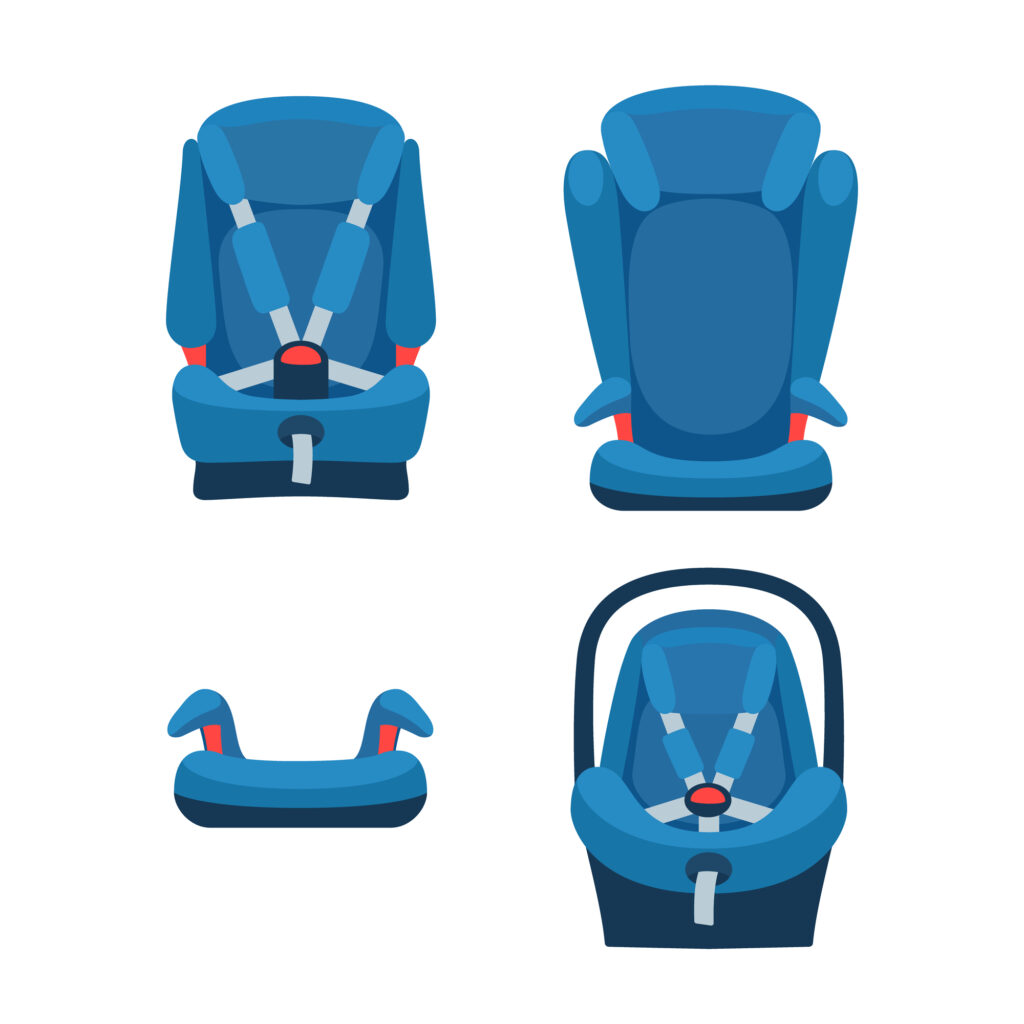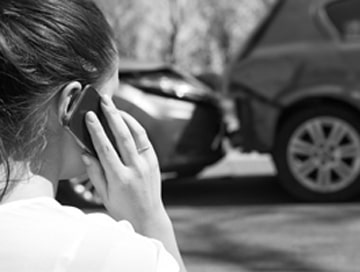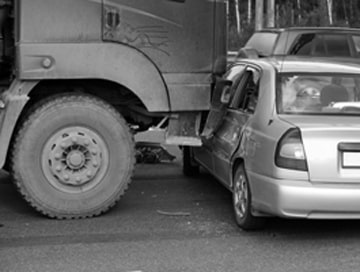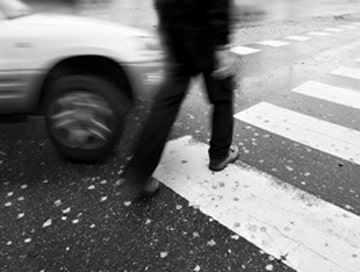
One of the most crucial considerations for parents is how to keep children safe on the roads. So, what are the car seat laws in California? Thankfully, California law provides clear guidelines to help you keep your children safe in the car, particularly concerning the use of car seats. In this post, we’ll answer the most common questions about car seat laws to help you understand what you need to do and when. Before we get started, let’s consider why it’s so crucial to follow them:
Why are car seats so important?
According to the California Highway Patrol, almost 15,000 children under 16 were injured in car accidents in 2017. The majority of these children used the appropriate safety equipment — only 7 percent didn’t. In contrast, among children who died in car accidents in California that same year, 34 percent were not using safety equipment.
These statistics highlight the potentially tragic consequences of not following California’s car seat laws. The laws exist to prioritize your child’s safety, protecting them in the event of a car accident.
The risk to children from accidents on the road is high for several reasons — most notably, their physical development. For example, because young children have softer skulls than adults, they are at greater risk of severe head injuries. These risks vary according to the child’s stage of development, which is why the law clearly sets out when it’s safe to move from one car seat to the next.
How old is your child?
Broadly speaking, the car seat you should use depends on your child’s age. There are four age categories:
- Birth to 2 years old
- 2 years to 8 years old
- 8 years to 16 years old
- Over 16 years old
However, age isn’t the only thing you need to consider. The guidelines may vary according to your child’s size and stage of development. In the following sections, we’ll consider each age group in turn so that you know how to apply the law with your child’s best interests in mind.
California car seat laws for children under 2 years old
According to California law, children from birth to 2 years old must be secured in a rear-facing car seat.
It’s essential to follow the manufacturer’s instructions, paying particular attention to height and weight restrictions. Parents can adjust many car seats designed for children in this age group, which means they evolve with children as they grow. If you’re unsure when or how to do this, contact the car seat’s manufacturer or an appropriate car seat specialist to help you maximize the protection offered by the car seat.
Each car seat will have a maximum height and weight, so it’s important that you track your child’s growth to know when to move them onto the next seat. This is also something you may wish to consider if you’re looking for your child’s first car seat, as some last longer than others, making them more cost-effective.
Do all children under 2 need to be rear-facing?
While all babies must use a rear-facing car seat, the rules about when they can progress to forward-facing are not strictly age-based.
This blurred boundary exists because children grow at different rates, which is important when considering the safety of forward-facing seats for young children.
According to California law, children that weigh more than 40 pounds or are more than 40 inches tall can progress to a forward-facing car seat. In general, however, children don’t meet this milestone until around age 4.
It’s also worth bearing in mind that what’s legal isn’t necessarily the safest option. There’s lots of evidence to suggest it’s best to keep children in rear-facing seats for as long as possible — ideally until they outgrow rear-facing car seats. For some children, this can be up to around 8 years old.
Why? It’s all about body mechanics and the forces that impact it during a car accident. When rear-facing, the car seat absorbs most of the force from an accident, protecting the head, neck, and spine. In contrast, when forward-facing, the force from an accident is more likely to throw the child’s head forward, potentially leading to serious head, neck, and spine injuries.
Do children in rear-facing seats need to be in the back?
In general, yes. The law states that all children younger than 8 years old must travel in the vehicle’s back seats. In line with this legal requirement, rear-facing seats should be placed in the back of the vehicle, but there are some exceptions, such as if your vehicle has no back seats, they are rear-facing seats, or there is a medical exemption that’s been certified by your pediatrician.
If you need to place your child’s car seat in the front of the car for any of these reasons, you must deactivate any passenger airbags.
When can I move my child to a booster seat?
The transition to a booster seat is when the law becomes a little less clear. According to California law, children under the age of 8 must use either a car seat or a booster seat — but there are no specific rules about when you can transition them from one to the other.
In general, you should aim to keep your child in each car seat for as long as possible. Similar to the transition from rear-facing to forward-facing car seats we described above, each transition is accompanied by a potential reduction in the seat’s level of protection.
Thinking in these terms, your child will be ready to transition to the booster seat as they outgrow their car seats. This varies according to the manufacturer’s instructions but usually won’t happen until your child weighs more than 40 pounds.
When you first move your child to a booster seat, you should make sure it includes belt-positioning, as evidence suggests children under the age of 12 years old are not ready to transition to the adult seat belts fitted in your car. This is important, as poorly-fitting seatbelts are a significant cause of injury among children.
When can I stop using a booster seat for my child in California?
California law states that children must use a booster seat until they are at least 8 years old or are taller than 4 feet 9 inches. Legally speaking, you can then remove the booster seat and allow your child to sit in the car without it.
However, as mentioned several times already, you should consider this transition carefully. Removing the booster seat is one of the biggest steps in terms of your child’s safety, as it means they will no longer have any additional protection beyond what a seatbelt and the vehicle itself provides to adults and children alike. As children are smaller and less developed than adults, the risk to them can be greater — it’s essential to bear this in mind when making your decision.
How do you know if your child is ready to stop using a booster seat?
When deciding to lose the booster seat, it’s important to consider your child and their development. You can do this by asking them to sit in the car and evaluating how well they fit in the vehicle’s standard seats.
If your child can’t sit back against the seat, this is a sign they’re not ready to stop using the booster. Similarly, their knees should reach the edge of the seat while maintaining contact with the back of the seat.
As we discussed earlier, the fit of the seatbelt is also crucial in keeping your child safe. It should pass comfortably over your child’s shoulder, in the same way you would expect to see when an adult travels in your car. If the seatbelt passes close to the child’s face, this is a red flag. While it can be tempting to move the seatbelt out of the way to make your child more comfortable, this will put your child in a vulnerable position in the event of an accident, without sufficient protection from the seatbelt. The lap belt should also contact your child’s legs, not their upper torso.
While these are the signs you should look out for in terms of safety, you should also think about your child’s comfort levels. Keep hold of the booster seat when you first transition them. If you notice them looking uncomfortable or moving the seatbelt around a lot, it might be that they’re not entirely comfortable with the transition. In these circumstances, it’s better to wait a little longer.
When can my child sit in the front of the car?
According to California law, children must ride in the back of the car until they are at least 8 years old. Aside from the exceptions outlined earlier in the article, it’s never acceptable to let a child ride in the front of the car, unless children already occupy all the other seats — for example, if you are carrying four children in a car with three rear seats.
Even when your child is ready to lose the booster seat, it’s still a good idea to keep them in the back for as long as possible. It’s safer.
What happens if you break California’s car seat laws?
It is crucial that you follow California’s car seat laws to keep your child safe. The biggest risk if you don’t? Your child could be seriously injured — or worse — in a car accident.
There are also financial penalties for parents who ignore the rules. If it’s the first time you’ve been caught breaking California’s car seat laws, you will likely be fined $500 per child. If you have three inappropriately restrained children in your car, it will multiply to around $1,500 in total. If you’re caught breaking the law a second time, these fines are doubled.
You will also receive points on your driving record, which will make it difficult and expensive for you to obtain insurance for your vehicle in the future.
What should I do if my child hates their seat?
The law applies whether your child likes their car seat or not. Unless you have a legitimate medical exemption certified by your family’s pediatrician, your child’s discomfort isn’t a valid reason to break the law.
Instead, it would be best to try to resolve the issue and help your child feel more comfortable while keeping them safe. This is often easier said than done, but a great starting point would be to work with a specialist to ensure you’re using the car seat correctly. Many car seats can now be adapted to accommodate your child as they grow. If they’ve recently started feeling uncomfortable, it might be that the settings need adjusting slightly.
Through a process of trial and error, you should be able to find a solution that works for your child — while also ensuring they’re as safe as possible on the road.
What else do I need to know?
California law also states that you must replace your child’s car seat if it has been involved in an accident. This is vital, as the impact from a collision can impact the seat’s ability to protect your child in the future.
The law also prohibits you from selling such car seats to anyone else. You can be prosecuted for doing so.
For this reason, you should also be wary of second-hand car seats and ensure they have not been involved in a car accident before using them with your child.
Following the legal requirements and the recommended guidelines for transitions between seats will give your child the maximum possible protection while you’re on the road.
Need more help or advice on California’s car seat laws? Get in touch
Do you have any more questions about child car seat laws in California? Or are you involved in a dispute or case you need help with? Get in touch with one of our expert lawyers who will be happy to help with your query. Call us today.












